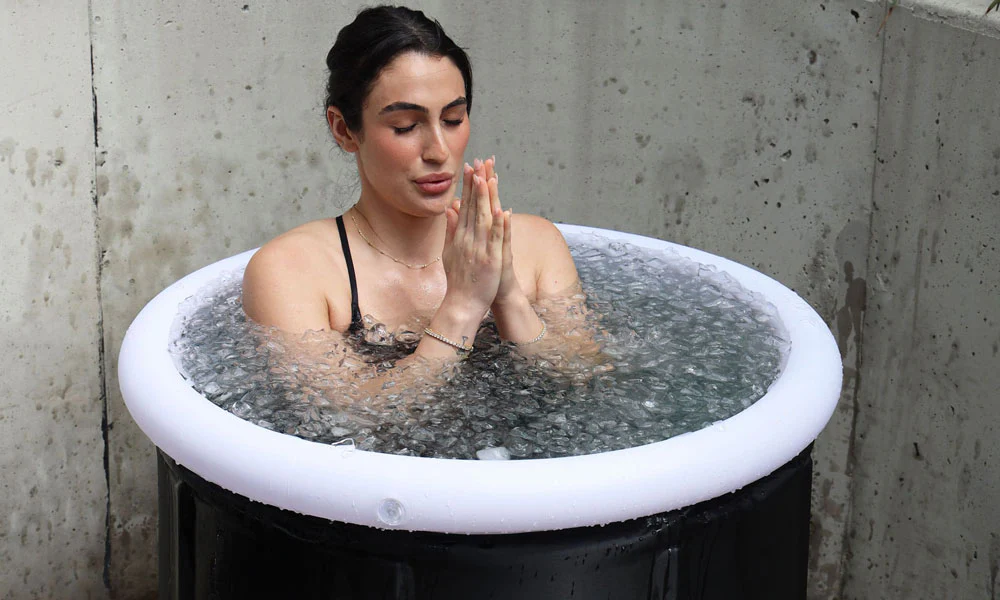
The Chill That Changes Everything: Why Cold Plunges Belong in Every Athlete's Routine
Discover how cold water therapy can accelerate recovery, boost mental resilience, and enhance athletic performance for everyday athletes.

SensAI Team
5 min read
The Chill That Changes Everything: Why Cold Plunges Belong in Every Athlete’s Routine
The first time you lower yourself into a tub of ice-cold water, your body screams one thing: get out. Your breath catches, your skin prickles, and every instinct begs you to retreat. But here’s the twist—if you stay, even just for 30 to 60 seconds, something remarkable happens. Your breathing steadies, your focus sharpens, and when you finally emerge, it feels like someone hit the reset button on your entire body.
That’s the power of the cold plunge.
Why Cold Matters for Everyday Athletes
Cold exposure isn’t just for Wim Hof followers or extreme endurance junkies—it’s a tool that everyday athletes, from weekend runners to gym-goers, can use to recover smarter and train harder. When your muscles are sore after a workout, microscopic tears in the tissue create inflammation. Cold water constricts blood vessels like a traffic cop waving cars off a jammed street, reducing swelling and flushing out waste products like lactic acid. Then, as you warm up again, blood rushes back, delivering fresh oxygen and nutrients that speed up repair.
Think of it as hitting “refresh” on your muscles.
But the magic isn’t just physical. Cold plunges trigger a surge of norepinephrine—a brain chemical linked to focus, mood, and resilience. It’s why stepping out of the cold often feels like stepping into a new mindset: calm, energized, and ready for what’s next.
The Science, Simplified
- Vasoconstriction & vasodilation: Blood vessels tighten in the cold, then expand as you warm up, promoting circulation.
- Hormetic stress: The brief shock of cold is a “good stress,” training your nervous system to adapt—like lifting weights, but for resilience.
- Metabolic boost: Cold exposure increases brown fat activity, which burns energy to generate heat.
In short, cold plunging teaches your body (and brain) how to handle stress better—on the field, in the gym, and even at your desk.
How to Make Cold Plunge Work for You
You don’t need a designer ice bath setup to reap the benefits. A bathtub, a cold shower, or even a plunge into the nearest lake will do. What matters most is consistency and mindfulness.
- Start small: Begin with cold showers for 30–60 seconds at the end of your normal routine.
- Find your sweet spot: Aim for 2–4 minutes in 10–15°C (50–59°F) water, 2–3 times per week.
- Breathe through it: Slow, controlled breaths help override the body’s panic response and anchor you in the moment.
- Track your response: Notice energy levels, soreness, and sleep quality after sessions. A journal or fitness tracker can help reveal patterns.
Beyond Recovery: The Mental Edge
For many, the real transformation isn’t just muscle repair—it’s mindset. Cold plunges demand presence. You can’t scroll your phone underwater, and you can’t fake calm when your nervous system is screaming. Learning to find stillness in the cold builds mental toughness that carries over into training, competitions, and even everyday stress.
It’s not just recovery—it’s resilience training.
Final Dip
Every athlete looks for an edge—better recovery, more energy, sharper focus. The cold plunge offers all three in one icy package. It’s uncomfortable, yes, but so is the last rep of a heavy set or the final mile of a long run. The difference is, cold plunging teaches you that discomfort isn’t the enemy—it’s the gateway.
So the next time you’re sore, stressed, or simply need a reset, consider taking the plunge. Step into the cold, breathe through the shock, and discover how a little chill can change everything.
Ready to optimize your recovery with AI-guided cold therapy protocols? Download SensAI from the App Store and get personalized recovery recommendations based on your training data.